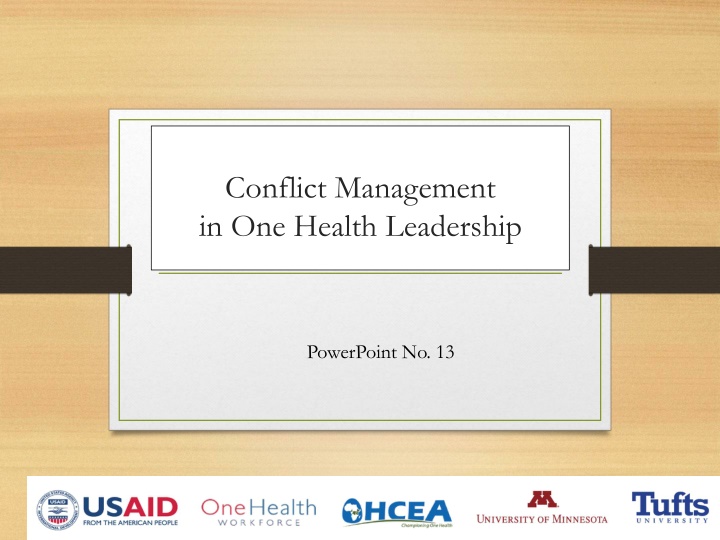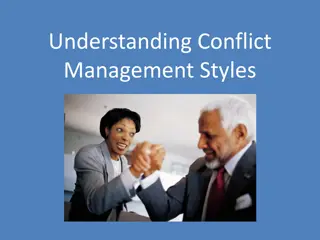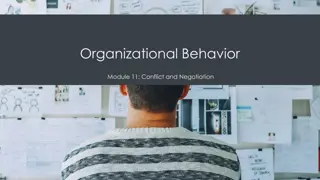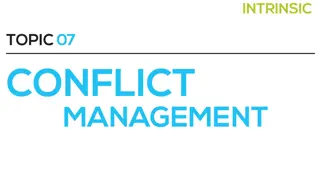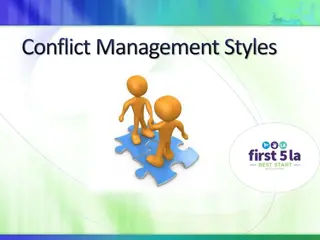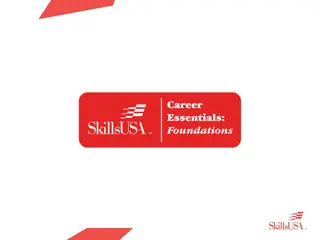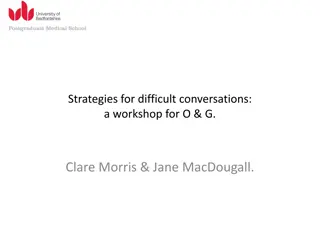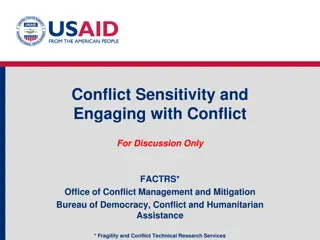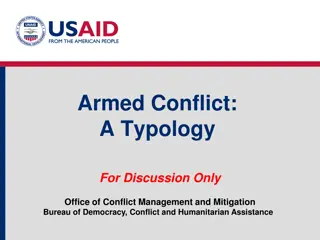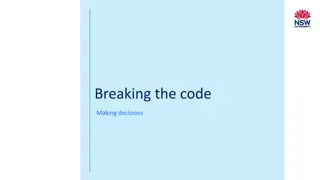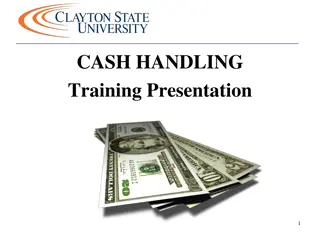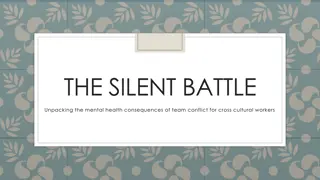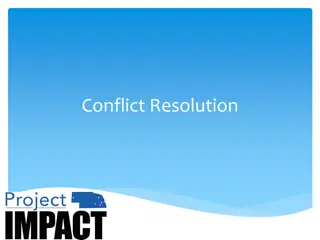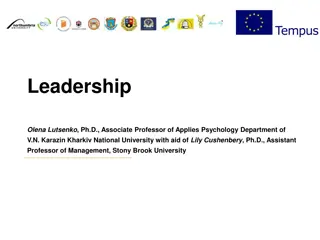Conflict Handling Modes in Leadership
The different conflict handling modes in one health leadership, including collaborating, competing, compromising, accommodating, and avoiding. Learn to assess conflict situations and recognize your own conflict management style. Discover the significance of assertiveness and cooperativeness in conflict resolution.
Download Presentation

Please find below an Image/Link to download the presentation.
The content on the website is provided AS IS for your information and personal use only. It may not be sold, licensed, or shared on other websites without obtaining consent from the author.If you encounter any issues during the download, it is possible that the publisher has removed the file from their server.
You are allowed to download the files provided on this website for personal or commercial use, subject to the condition that they are used lawfully. All files are the property of their respective owners.
The content on the website is provided AS IS for your information and personal use only. It may not be sold, licensed, or shared on other websites without obtaining consent from the author.
E N D
Presentation Transcript
Conflict Management in One Health Leadership PowerPoint No. 13
Objectives Understand the different modes of conflict handling. Become more aware of your own conflict management style. Recognize the conflict modes of others. Assess conflict situations. 3/9/2025 2
What is conflict? 3/9/2025 3
Conflict? Any situation where your concerns or desires differ from another person s.
When is conflict useful? Negative emotions tell us that issues are important and need attention. Surfaces issues. All high performing teams have some conflicts. i.e. about 3:1 ratio of positive to negative.
A s s e r t i v e n e s s Two basic aspects of all conflict handling modes Cooperativeness Your Conflict Mode Skill Situation = +
The Five Conflict Handling Modes + A s s e r t i v e n e s s Collaborating Competing Compromising Accommodating Avoiding - Cooperativeness + -
Exercise 1 Listen to the description of each style AND LATER YOU WILL BE REQUIRED TO: Consider how frequently you use that style i.e. 100% to 10% of the time?
Competing My way or the highway A s s e r t i v e n e s s o Quick Action o Unpopular Decisions o Vital Issues o Protection Cooperativeness
Accomodating It would be my pleasure A s s e r t i v e n e s s o Showing reasonableness o Developing performance o Creating good will o Keeping peace o Retreating o Low importance Cooperativeness
Avoiding I ll think about it tomorrow A s s e r t i v e n e s s o Issues of low importance o Reducing tensions o Buying time o Low power / control o Allowing others o Symptomatic problems Cooperativeness
Compromising Let s make a deal A s s e r t i v e n e s s o Moderate importance o Equal power strong commitment o Temporary solutions o Time constraints o Backup Cooperativeness
Collaborating Two heads are better than one o Integrating Solutions o Learning o Merging Perspectives o Gaining Commitment o Improving Relationships A s s e r t i v e n e s s Cooperativeness
4 Paradigms of Human Interaction You influence me
Exercise 1 Discuss in pairs What are the benefits / disadvantages of the styles you use most / least? (2 minutes) When might it have been helpful to use another style? (1 minute) When might it be important in the future, in your current role to apply this learning? (4 minutes)
Managing conflict constructively: the behaviours Surfaces unacknowledged differences in perspectives on work issues that may be preventing achievement of goals Tolerates hostility Demonstrates an openness to others views Manages anger in themselves and others effectively Chooses an effective conflict management style to resolve the conflict Demonstrates an ability to manage crucial conversations effectively and achieve win-win outcomes
Crucial Conversations Change happens one conversation at a time The path to organisational change is personal change Conversations that; Surface assumptions Clarify responsibilities Identify and remove barriers Provide meaningful and honest feedback on actions Create possibility We can only change one conversation at a time
Elephants in the Room Are you aware of important conversations in your head? In other people s heads? How long does it take for those crucial conversations to get out into the open? Ignoring the Elephant in the Room only makes it bigger
Crucial Conversations 1.Common Purpose What is important to me and you 2. Current reality vs pretence You know the way we say ... in reality we ... 3. Impact of pretence When we do that this happens ..
Crucial Conversations 4. Cost... to me personally 5. Creating Future Possibilities What I want to happen is How do you think we could change this? 6. Commitment to change: what you will do and what you would like them to do I want to commit to could you ? ...CREATING POSSIBILITIES.
